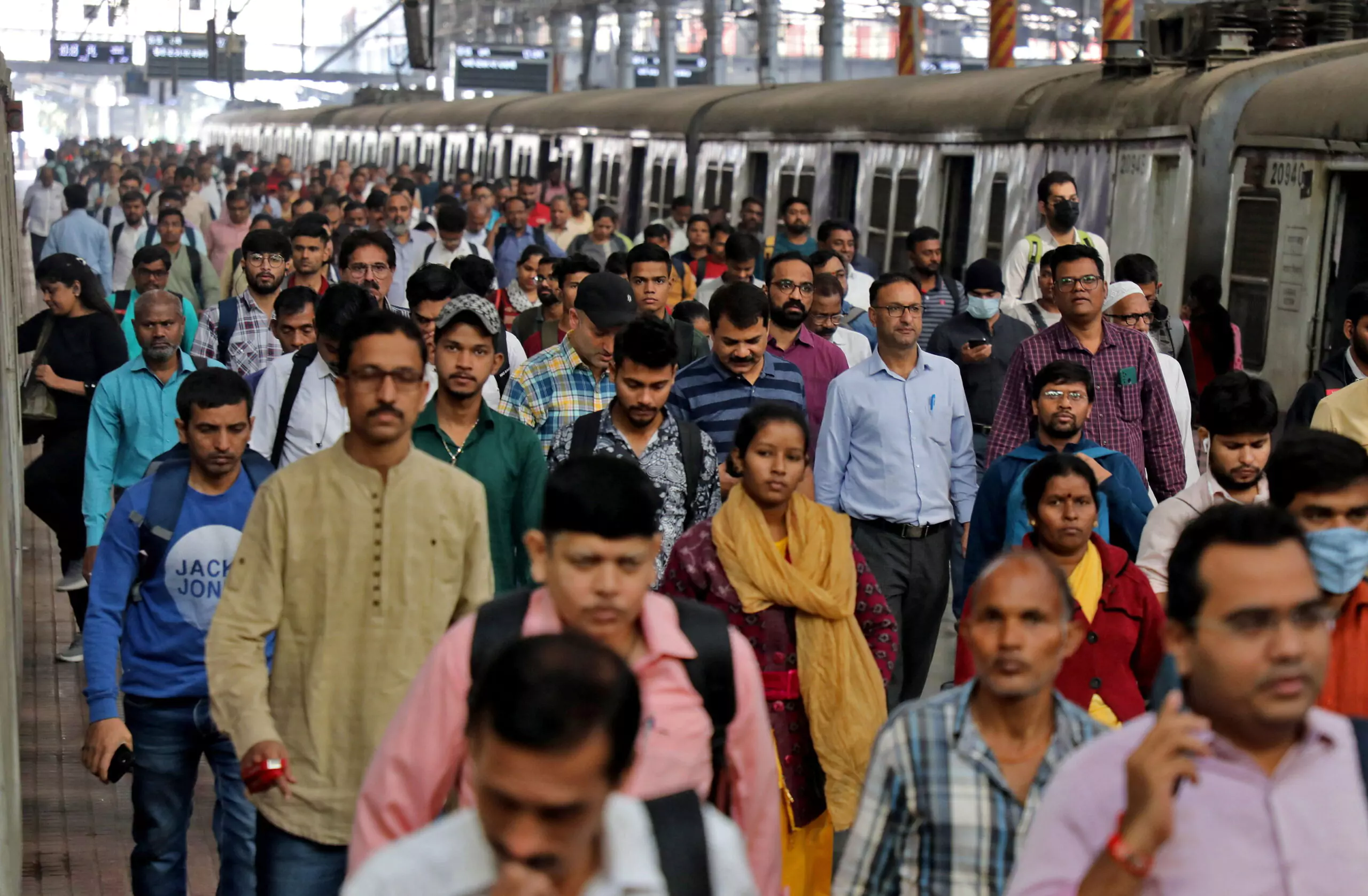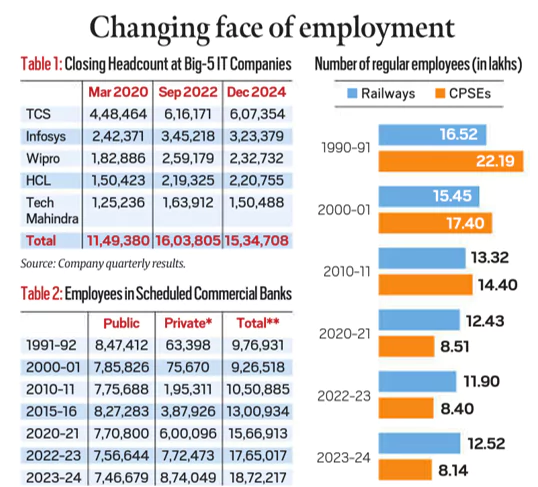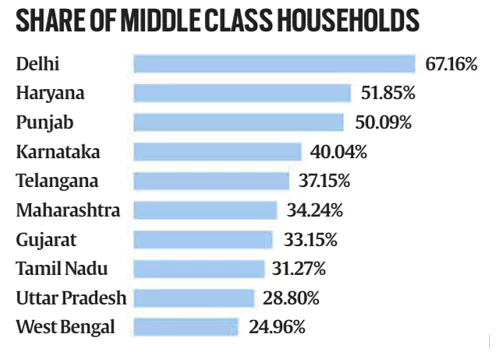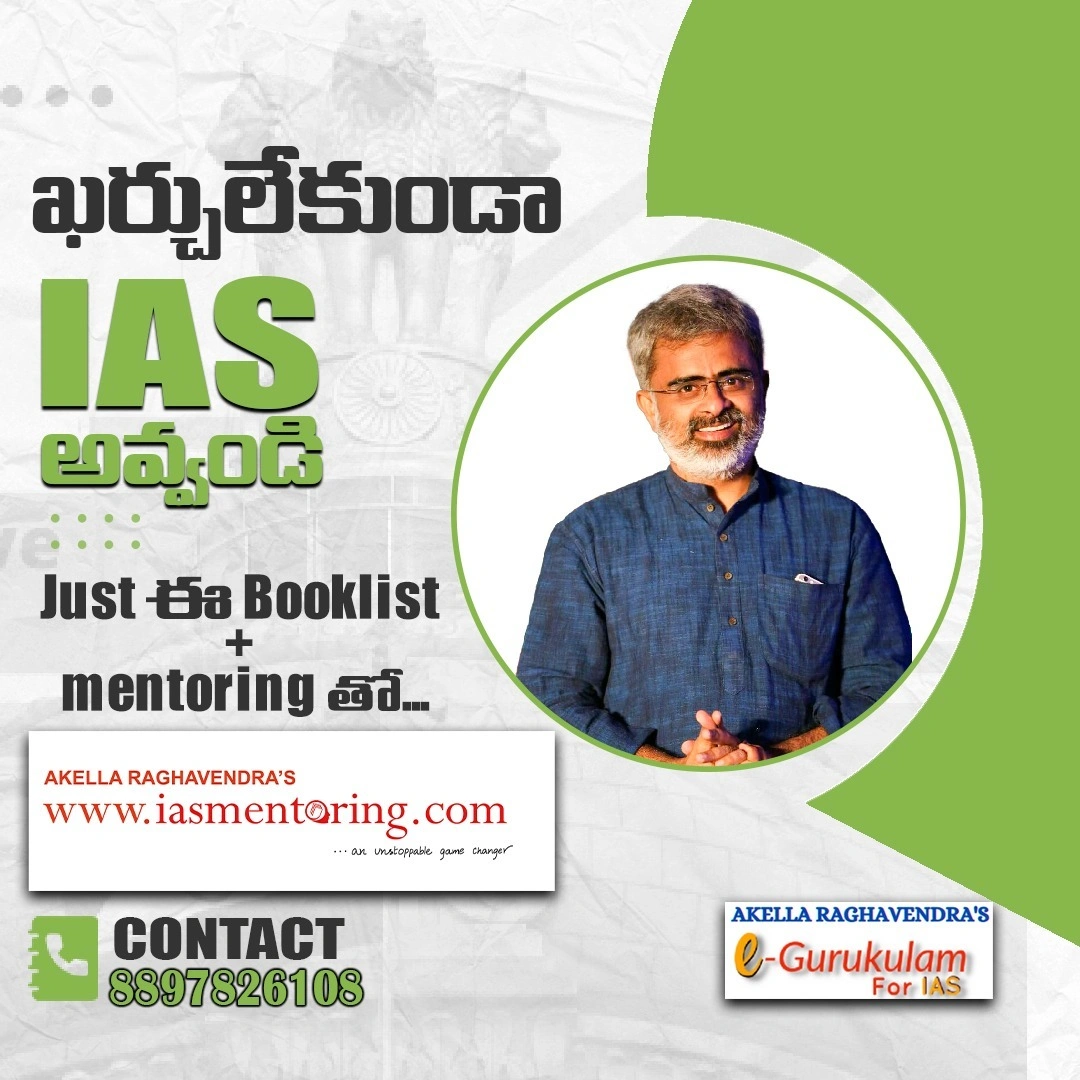
Middle Class
Middle Class 1.0
- India’s Middle class after Independence was largely created by the public sector.
-
Government jobs in Railways, Public Sector Enterprises (PSEs), and Banking
were
primary employment sources.
-
Public sector employment peaked in 1990-91 and has declined since
liberalization
(1991).
Middle Class 2.0
- Emerged post-1991 economic liberalization .
-
Driven by private sector employment in IT, finance, services,
logistics, and
e-commerce.
-
Major contributors include IT companies, private banks, logistics (like Zomato,
Swiggy), and gig economy platforms.
Decline in Public Sector Employment
- Indian Railways: Employment declined from 16.5 lakh
(1990-91) to
11.9 lakh
(2022-23) despite increase in services.
-
Even after recent recruitment, it is still around 12.5 lakh
(2023-24) .
- Public Sector Enterprises (PSEs): Employment in Central
PSEs
reduced from
22.2
lakh (1990-91) to 8.1 lakh (2023-24) .
-
Major PSUs like BHEL, SAIL, Coal India, etc., have seen declining
manpower.
-
Banking Sector: Public sector banks' (PSBs) employee strength reduced
from 8.5
lakh (1991-92) to 7.7 lakh (2020-21) .
-
Private sector banks overtook PSBs in employment by
2022-23 .

Rise of Private Sector Employment
-
IT Industry: Major employment growth seen in TCS, Infosys,
Wipro, HCL,
and Tech
Mahindra .
- TCS: From 45,714 (2004-05) to
4,48,464 (2024) .
-
Total employment in Big-Five IT firms: 15.34 lakh (2024) ,
exceeding
Indian
Railways' workforce .
-
Private Banks: HDFC Bank's employment (2.13 lakh) almost matched
State
Bank of
India's (2.32 lakh) in 2024.
-
Private banks like ICICI, Axis, Kotak, Bandhan now employ
higher
than
many
PSBs.
-
Gig Economy: Rapid employment in gig platforms like
Uber, Zomato,
Swiggy.
-
Uber employs over 10 lakh drivers , Zomato engages
4.8
lakh monthly
food
delivery partners.
-
These jobs, however, lack formal benefits and stability.
Structural Employment Shift (Public to Private)
-
Employment Shift: Post-liberalization (1991), organized employment
shifted from
public sector to private sector .
-
Resulted in Middle Class 2.0 , fueled by private-sector
jobs.
-
Challenge in Manufacturing Sector:
-
Manufacturing sector share in the workforce stagnated at 11.4%
(2023-24) .
-
Majority of the workforce remains in agriculture (46.2%)
or the low-wage
informal sector .
-
Lack of high-quality manufacturing jobs remains a major employment
challenge.
Employment Challenge
-
Agriculture Backslide: Farm sector workforce share decreased from
64%
(1993-94) to
42.5% (2018-19) .
-
However, it increased again to 46.2% (2023-24) due to
lack of
better
employment.
-
Service Sector Dominance: High-quality employment generated only in
the services
sector (IT, finance, health, logistics, etc.).
-
Low-income jobs still dominate, like gig work, security
staffing,
sanitation, etc.
- Lack of Manufacturing Boom: Unlike China ,
India has not
experienced large-scale
labor transition from agriculture to manufacturing .
-
Result: Manufacturing sector's contribution remains stagnant.
Different Definitions of Middle Class
-
PRICE Report (2022): Middle class household income: Rs 5 lakh
- Rs 30
lakh
annually.
-
NCAER: Middle class household income: Rs 2 lakh - Rs 10
lakh
annually.
-
Abhijit Banerjee Definition (2008): Per capita daily expenditure:
$2 -
$10 (Rs 160
- Rs 800) .
-
Government Definition: Families with annual income less than
Rs 8 lakh
fall under
Economically Weaker Section (EWS) .

Middle Class as a Vote Bank
-
Political parties like AAP and BJP are now targeting the middle
class.
- AAP's new "Middle Class Manifesto" aims at increasing
education,
health
allocations, and tax exemptions .
-
BJP has historically gained middle-class support since
2014 .















